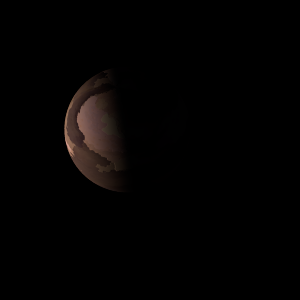|
|
Space Astro
|
Info for exoplanet "Mirgir Thel"
| Scientific (actual) data |
|---|
| Name | Kepler-1077 b |
| Planet status | Confirmed |
| Radius | 0.247 |
| Orbital period | 34.3512 |
| Discovered | 2016 |
| Updated | 2021-02-05 |
| Tconj | 2454970 |
| Publication | Announced on a website |
| Detection type | Primary Transit |
| Alternate names | 2MASS J19240807+4216042 b, K02062.01, KIC 6774880 b, KOI-2062 b, KOI-2062.01, WISE J192408.07+421604.2 b |
| Star name | Kepler-1077 |
| Right ascension | 291.03° |
| Declination | 42.27° |
| Mag j | 13.83 |
| Mag h | 13.481 |
| Mag k | 13.496 |
| Star distance | 1098 |
| Star metallicity | 0.03 |
| Star mass | 1.02 |
| Star radius | 1.02 |
| Star age | 4.17 |
| Star temperature | 5816 |
| Star alternate names | 2MASS J19240807+4216042, KIC 6774880, KOI-2062, WISE J192408.07+421604.2 |
| Wikipedia article | Kepler-1077 b |
Back
| |
| Fictional info (?) |
|---|
| Suggested name | Mirgir Thel |
| Planet type | Cold planet |
|
| Atmosphere | Carbon dioxide | 74% |
| Nitrogen | 14% |
| Hydrogen | 9.3% |
| Sulfur dioxide | 2.4% |
| Hydrogen deuteride (HD) | 0.0047% |
| Atmospheric pressure | 2.6 bar |
 |
| Moon | Thee'steph | Small almost round crater-filled moon |
| Google search for Mirgir thel |
|
Website by Joachim Michaelis
|
|
|
|